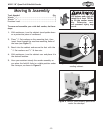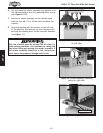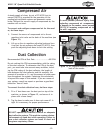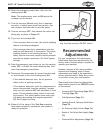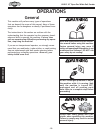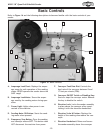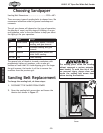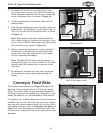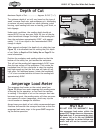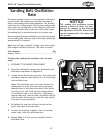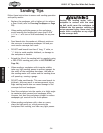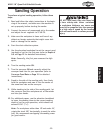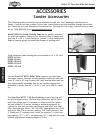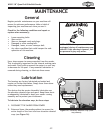
-20-
N(/(*(/Fg\e<e[N`[\9\ckJXe[\i
FG<I8K@FEJ
:_ffj`e^JXe[gXg\i
Sanding Belt Dimensions ..........................19"W x 48"L
There are many types of sanding belts to choose from. We
recommend aluminum oxide for general workshop envi-
ronments.
The grit you choose will depend on the type of operation,
the species of wood, and the stage of finishing. As a gen-
eral guideline, refer to the chart below to help you select
the right grit for your operation.
>i`k :cXjj LjX^\
36 Extra Coarse Rough sawn boards, thickness
sanding, and glue removal.
60 Coarse Thickness sanding and glue
removal.
80-100 Medium Removing planer marks and
initial finish sanding.
120-180 Fine Finish sanding.
The general rule of thumb is to sand a workpiece with
progressively higher grit numbers, with no one grit
increase of more than 50. Avoid skipping grits—the larger
the grit increase, the harder it will be to remove the
scratches from the previous grit.
JXe[`e^9\ckI\gcXZ\d\ek
KfZ_Xe^\k_\jXe[`e^Y\ck#[fk_\j\jk\gj1
(% DISCONNECT THE SANDER FROM POWER!
)% Open the sanding belt access door and loosen the
tension lock shown in =`^li\(..
=`^li\(.% Sanding belt tension lock and
lever.
Tension Lock
Tension Lever
The moving parts inside the sanding
cabinet represent a serious entangle-
ment hazard. To avoid the risk of seri-
ous personal injury, always close and
secure the sanding belt access door
before starting the machine.




